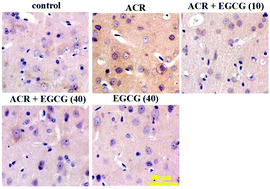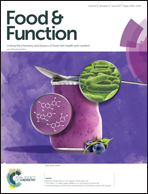Epigallocatechin-3-gallate attenuates cerebral cortex damage and promotes brain regeneration in acrylamide-treated rats
Abstract
Acrylamide (ACR) is a neurotoxic industrial chemical intermediate, which is also present in food and water. We investigated the neuroprotective effects of epigallocatechin-3-gallate (EGCG), the most abundant polyphenol in green tea, on ACR-treated rat brain. Rats were pre-treated with EGCG for 4 d and then administered ACR and EGCG for 14 d. EGCG increased acetylcholinesterase (AChE) activity and the rate of Nissl-positive cells in ACR-treated rats. Senescence-associated β-galactosidase (SA-β-gal) staining indicated that EGCG attenuated ACR-induced senescence. Tumour necrosis factor alpha (TNF-α), inducible nitric oxide synthase (iNOS), and cyclooxygenase 2 (COX-2) protein expression indicated that EGCG inhibited ACR-induced inflammation. In addition, immunohistochemical analysis of nestin and brain-derived neurotrophic factor (BDNF) revealed that EGCG promoted brain regeneration in ACR-treated rats. Altogether, our results suggest that EGCG can attenuate ACR-induced brain damage and promote regeneration in the cerebral cortex of rats. Therefore, we hypothesized that EGCG may alleviate ACR-related nerve injury.



 Please wait while we load your content...
Please wait while we load your content...